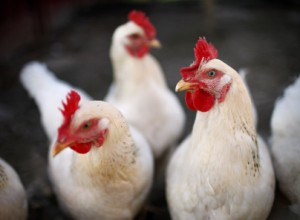 If you are not concerned with putting meat in your freezer, or live in an area where butchering chickens would be frowned upon, you can still enjoy the many benefits of owning chickens. If you never intend to breed chickens to get replacements for older birds or to butcher, you won’t even need a rooster Although half the fun of owning chickens is the delightful rooster’s crow and antics, some cities and neighborhoods prohibit the keeping of roosters due to the noise.
If you are not concerned with putting meat in your freezer, or live in an area where butchering chickens would be frowned upon, you can still enjoy the many benefits of owning chickens. If you never intend to breed chickens to get replacements for older birds or to butcher, you won’t even need a rooster Although half the fun of owning chickens is the delightful rooster’s crow and antics, some cities and neighborhoods prohibit the keeping of roosters due to the noise.
Roosters crow—that’s what they do. They are the alarm system for the flock, a sort of “early warning system” of any danger, and when he crows, the hens come running. Roosters do not just crow at daylight, they crow anytime they see something out of the ordinary. This can be a low-flying, dangerous hawk, or a butterfly. A rooster may even crow in the middle of the night if a passing car light disturbs them. For those that love the sound of a rooster’s crow, it’s a joy to be around. For others, maybe not so much.
It isn’t necessary to have the male of the species around just to enjoy egg production, however. Hens will lay eggs faithfully, whether there is a man about, or not. The eggs just won’t be fertilized. They taste the same, and have the same nutritional quality of fertilized eggs.
Egg laying breeds are a special variety all their own. They are egg-laying machines that produce larger quantities of eggs than the average farm chicken, and have virtually no meat qualities whatsoever. Pick up an egg-layer and you will feel bones and feathers. All of their efforts go into producing eggs.
The most popular breeds of egg-layers are the Leghorn, Andalusian and Anacona. They are all very docile birds, with attractive feathering. The Andalusian is well-known for its extra high-egg production and docile temperament, while the Leghorn has very high egg production as well, but tends to be a little more skittish. The Andalusian has a more average production level and is flightier, but still very friendly.
For real high-volume egg production, many hatcheries have hybrids or crosses that are bred for superior egg-laying abilities, and they will beat out even the high producing Leghorns and Anaconas for number of eggs in a given period. Many of the commercial egg-layers will even occasionally lay two eggs in a single day.
There is a lot of debate over what color eggs are better. Some people firmly believe that brown eggs have a higher nutritional value, and many organic growers choose brown egg laying breeds for their commercial egg sales. That isn’t because they are actually better, but because public perception is that they are. There is actually no difference between chicken eggs of one color, and eggs of another.
If you want a little variety in your eggs, you can choose some of the dual purpose breeds that not only will give you a little meat if you choose, but also lay colorful eggs that are not the standard white or brown. A few of these breeds are the Araucana (blue/green eggs), the Easter Eggers (blue/green eggs) or the Legbar (blue/green eggs).
Reproduction and Purchase
It is important to note that all of the egg-laying breeds have one thing in common: they are not broody. No matter what the breed’s disposition, calm and easy-going, or flighty and skittish, none will bother setting on eggs. An egg-layers sole purpose in life is to lay eggs. Once she is done doing that, she’s off to the yard to see what there is to eat. She couldn’t care less about the eggs.
In order to replenish your supply, you will have to rely on your local hatchery to sell you new chicks to raise, or learn how to incubate the eggs your hens lay (that will require a rooster, however, so that the eggs are fertile to begin with). Or you can select one of the popular dual purpose breeds that will set their own eggs, and raise the chicks to be a happy part of your flock.
 Off The Grid News Better Ideas For Off The Grid Living
Off The Grid News Better Ideas For Off The Grid Living




